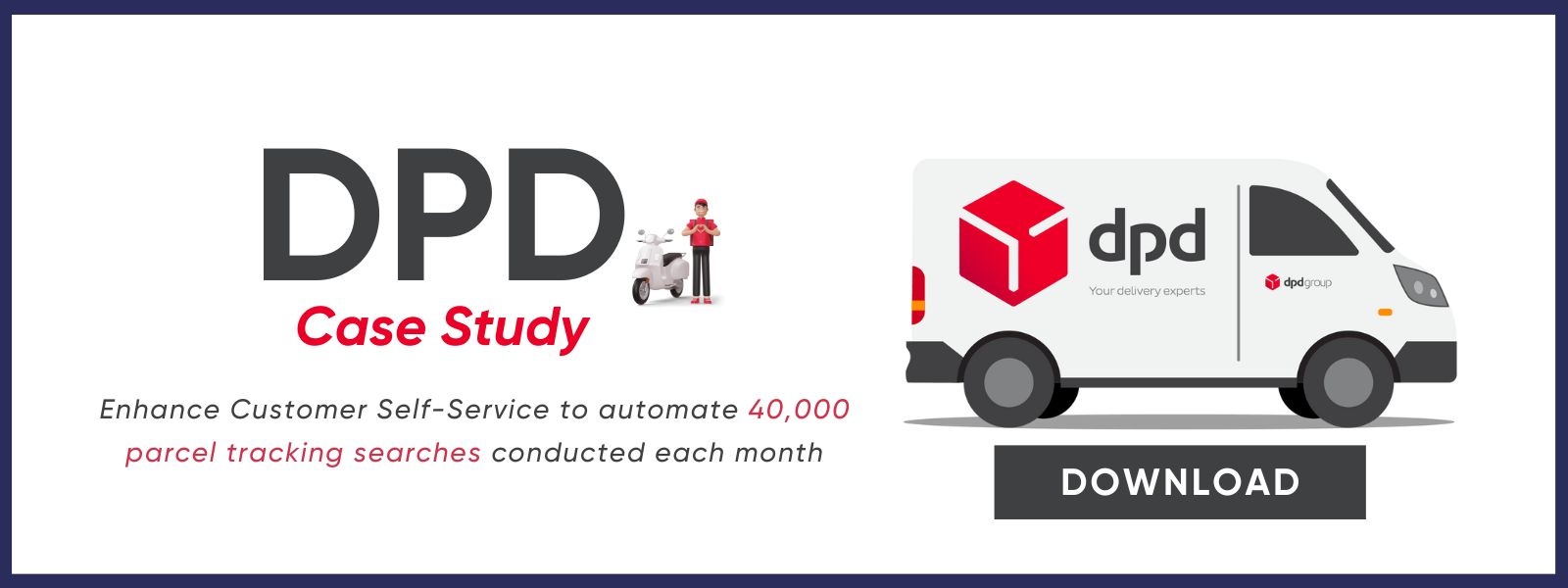
Customer self-service is a concept that has steadily gained steam across brands and businesses of all shapes and sizes. Chatbots, for example, have become a popular way to help customers without requiring the assistance, at least initially, of human customer support agents. These automated, AI-driven messaging “robots” can converse with customers using natural language to answer simple, commonly asked questions—in some cases, replacing dynamic FAQs altogether.
The truth is, consumers today are increasingly autonomous. According to Forrester, 72% prefer to find solutions to their problems or issues on their own versus contacting customer service for help.
Businesses must keep this in mind as they continue to evolve and transform the customer experience, providing more ways for customers to find the information they need, wherever and whenever they need it most. Doing so can have a positive impact on sales and brand loyalty while also reducing customer service operating costs in a big way.
In this article, we’ll take a closer look at what customer self-service is, the challenges and opportunities it presents, the solutions currently available in the market today, and a few ways to measure its effectiveness.
Customer self-service defined
Customer self-service, in its simplest form, is a tactic used by brands and businesses to give their customers various ways—from online resources to collaborative spaces to AI-powered tools—to find and get immediate answers to their questions on their own. Community forums, AI-powered chatbots, dynamic FAQs, and other emerging customer self-service tools not only create a better customer experience but also make it possible for businesses to offer “customer service that never sleeps.”
Advantages of customer self-service
There are a number of benefits that result from implementing customer self-service solutions, for both businesses and customers. Here are four key advantages worth keeping in mind:
1. Customer self-service improves the customer experience
This is probably the most important reason why any brand or business should implement customer self-service solutions today: putting the information customers need at their fingertips, thus making it accessible whenever and wherever they need it, is the best way to improve the overall customer experience.
And given that customer expectations today are higher than ever before—wherein customers typically want and expect an immediate response whenever they need help—these solutions make it possible for them to get what they need without the wait. Additionally, it allows them to be autonomous and avoid more conventional customer service channels (email and phone) altogether.

2. Customer self-service reduces support center volume
Some customer service inquiries simply don’t need human intervention. In fact, having a living and breathing customer support agent on-hand to answer questions that could otherwise be handled by customer self-service is a waste of time—especially knowing that more than 70% of commonly asked customer questions to any business can be automated easily. This includes asking for a business’s location or hours, following up on the status of a delivery, recovering a forgotten password, etc.
By implementing customer self-service solutions, businesses can significantly reduce support center contact volume and, therefore, allow customer support agents to provide greater value by freeing up their time to focus more squarely on complex or complicated customer inquiries.
3. Customer self-service boosts conversion
The idea here is simple: the more information customers can find on their own, the more likely they’ll take immediate action on whatever they’re searching. Whether businesses use automated messaging chatbots to provide delivery alerts or include dynamic FAQs on promotional offer pages, the end result is an improved customer experience that keeps customers on an uninterrupted purchase journey with your brand or business longer.
It also minimizes the chance of them hopping over to your competitors’ sites to compare and contrast similar offers. This alone can maximize conversion in a big (and ongoing) way.
4. Customer self-service improves the effectiveness of customer support agents
Even though the primary goal of implementing customer self-service is, first and foremost, to improve the customer experience, it also has the added benefit of giving customer support agents a central knowledge base that they can reference regularly.
Not only does this help them provide more accurate and consistent information to inquiring customers on an ongoing basis, but it also allows them to minimize the time it takes to respond to customer questions, thereby making them more efficient. In this way, customer self-service can actually play multiple roles to impact the customer experience in a positive way across multiple channels or customer service touch points.
Most popular customer self-service solutions
There’s a good chance you’re familiar with a number of customer self-service solutions available in the market today. If not, here’s a quick overview of today’s most popular solutions, all of which can be implemented easily and, in most cases, make an immediate impact on the customer service experience.
1. Dynamic FAQ
Dynamic FAQ is basically collecting your business’s most commonly asked questions—and their respective answers—into a centralized hub on your site that can be easily searched via an intelligent search engine.
This essentially makes it possible for customers to find immediate answers to straightforward questions in just a click or two. The added benefit of having an on-site dynamic FAQ is that it will also help boost your site’s SEO strength, raising your chances of appearing in top search results whenever customers search for information that can be answered by your FAQs.
2. Chatbot
Chatbots are conversational “robots” that can initiate a fully automated, two-way customer service dialogue using natural language, powered by artificial intelligence (AI), either via on-site chatbots or through popular messaging platforms (i.e. Facebook Messenger, WhatsApp, SMS). To get a chatbot up and running, businesses must provide the initial inputs to ensure that the bots can respond to customers’ most frequently asked questions with ease.
Then, the chatbots rely on machine learning to optimize and improve their responses over time—eventually making it possible for them to handle more complex customer requests or increasingly personalize those automated customer interactions over time. However, for any question that the bot can’t answer, they have the intelligence to know when it’s the right time to pass off the inquiry to a customer support agent for more personalized support.
3. Personalised support widget
Personalised support widgets are non-intrusive “pop-ups” intended to guide customers along their journey, anticipating what questions they may have based on the pages visited and actions already taken. For example, if a customer is booking a flight, a support widget may pop up to suggest add-ons or propose other booking recommendations. More advanced support widgets take personalisation a step further, using information in a customer’s profile or about past purchases to offer relevant suggestions.
4. Community forums
Community forums are, for all intents and purposes, the original customer self-service solution. They are dedicated platforms that live on your website where brand enthusiasts (i.e. “community members”) can gather to ask questions, share stories, offer advice, and support the brands they love with each other.
This is essentially content created by customers for customers—in other words, the people who are on the “front lines” of using your business’s products or services. The added perk is that, aside from being a valuable knowledge base for customers to tap into, these forums can create a real community of customers that can boost engagement, awareness, and loyalty in a big way.
Measuring the effectiveness of customer self-service
There are a lot of benefits that come with implementing customer self-service solutions. But how can you measure their effectiveness in an ongoing way or quantify their impact on your business?
One of the most common metrics to measure is return on investment (ROI). This can be viewed from a variety of different perspectives. From a pure volume standpoint, analyzing the number or types of contacts across all customer service touchpoints can be particularly helpful—especially if there’s a correlation between increased self-service volume and decreased phone and email support volume.
Another ROI-related metric worth considering is “resolution duration.” Businesses often want to see that, following the introduction of new customer service solutions, that the time it takes to resolve customer inquiries goes down over time—preferably across all channels.
This helps paint a picture around whether or not those solutions are becoming more efficient and, thus, more capable of handling and resolving more customer inquiries on any given day. And as you would imagine, this, too, can have a positive impact on both customer satisfaction and the overall customer experience.
There are also some more solution-specific metrics to consider. For example, for FAQ-based self-service content, you should consider measuring FAQ search volume, the number of unanswered questions remaining, the number of questions with a low satisfaction rate, the conversion rate across customers asking the same question, and so on.
On the other hand, for chatbots, you should consider measuring the “success rate”—in other words, the number of customer inquiries that get fully resolved via chat alone—and the number of exchanges it takes to resolve an inquiry (or before being handed off to a customer support agent) as well.
As you can see, there are a lot of different ways to understand the true impact of customer self-service solutions on your business. Doing so not only allows you to build a case for further investment in customer self-service but also creates greater visibility around how a business’s customer service efforts directly impact the bottom line.
Although customer self-service is still a novel idea for many brands and businesses today, it’s quickly becoming table stakes. The most obvious benefit is the impact these solutions have on meeting—and eventually surpassing—already heightened customer expectations as well as creating a better overall customer experience.
They can also go a long way towards building stronger customer relationships, which, in turn, gives businesses and brands a competitive edge in an increasingly crowded (digital) marketplace. All in all, by weaving customer self-service solutions into your broader, multi-channel customer service strategy, you pave the way for happier, more satisfied, and more loyal customers in both the near- and long-term.



.png)



